Very important these descriptors.
Check science descriptors Elementary School 3 4 5 6 7 8 9 year
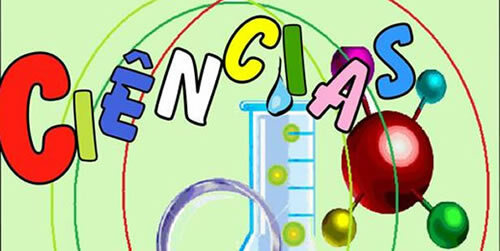
NO DESCRIPTOR
I. THEMATIC AXIS: LIFE AND ENVIRONMENT
D1 – Recognize the dependence of living beings on the physical and chemical components of nature.
D2 – Identify the main characteristics that define a living being.
D3 – Relate living beings to the environments in which they live.
D4 – Identify natural environments and environments built by humans.
D5 – Identify parts of vegetables.
II. THEMATIC AXIS: BEING HUMAN AND HEALTH
D6 – Identify the sense organs.
D7 -Identify the external characteristics of the human body.
D8 -Recognise behaviors that pose a risk to personal health.
D9 -Identify healthy human eating habits.
D10 -Establish comparisons between the different forms of waste treatment.
D11 -Recognize the differences between human dentition.
D12 -Recognize the importance of water treatment for human health.
IV. THEMATIC AXIS: EARTH AND UNIVERSE
D13 -Establish relationships between the Earth's movement and the existence of day and night.
D14 -Recognize fossils as a source of information about the Earth's past.
IV. THEMATIC AXIS: TECHNOLOGY AND SOCIETY
D15 -Identify the processes of transformation of the environment by man.
D16 -Understand the importance of proper waste disposal for the preservation of individual health and
collective.
D17 -Identify some steps in the transformation of raw material, in the manufacture of products
manufactured or industrialized.
D18 -Select objects that can be recycled or reused.
D19 -Identify the origin of materials used in everyday life.
NO DESCRIPTOR
I. THEMATIC AXIS: LIFE AND ENVIRONMENT
D1 – Compare different types of environments occupied by human beings.
D2 – Recognize that water can be found in physical states: solid, liquid and gas.
D3 – Identify elements that cause erosion in different environments.
D4 – Establish a feeding relationship between living beings in the same environment.
D5 – Identify the existence of life cycles that all living beings go through.
D6 – List the causes and consequences of water, air and soil pollution.
II. THEMATIC AXIS: BEING HUMAN AND HEALTH
D07 – Recognize nutrition as a way to obtain energy for the human body.
D08 – Identify structures related to the movement of the human body.
D09 – Relate the excretory system with the circulatory system.
D10 – Relate physical activity with metabolism acceleration.
D11 – Relate the skin to its functions in the human body.
IV. THEMATIC AXIS: EARTH AND UNIVERSE
D12 (17/5EF) – Identify the stars of the solar system.
D13 (D13/3EF) – Establish relationships between the Earth's motion and the existence of day and night.
D14 – Distinguish luminous stars from illuminated stars.
IV. THEMATIC AXIS: TECHNOLOGY AND SOCIETY
D15 – Identify water and sewage treatment as an essential measure for individual and collective health.
D16 (D13/5EF) – Understand the importance of proper waste disposal for the preservation of individual and collective health.
D17 – Understand the existence of different types of energy.
D18 – Understand energy transformation processes.
D19 – Recognize measurement and observation instruments developed by human beings.
NO DESCRIPTOR
I. THEMATIC AXIS: LIFE AND ENVIRONMENT
D01 – Recognize the diversity of living beings in natural environments.
D02 – Identify individual water conservation behaviors in nature.
D03 (D02/3EF) – Identify the main characteristics that define a living being.
D04 – Differentiate vertebrate animals from invertebrate animals.
D05 – Recognize dependency relationships of living beings with each other and with the environment.
D06 – Identify the energy source of vegetables.
D07 (D05/6EF) – List the parts of the superior vegetables with their functions.
D08 – Recognize the physical transformations of water.
D09(D03/6EF) – Differentiate the types of soil in terms of their composition.
D10 – Identify metamorphosis processes in groups of living beings.
II. THEMATIC AXIS: BEING HUMAN AND HEALTH
D11 – Identify the sensations perceived by the sense organs.
D12 – Recognize behaviors that pose a risk to personal health.
D13(D16/4EF) – Understand the importance of proper waste disposal for the preservation of individual and collective health.
D14 – Identify water treatment as an essential measure for individual and collective health.
D15 – Identify organs and systems of the human body, relating them to their functions.
D16 – Identify healthy human eating habits.
IV. THEMATIC AXIS: EARTH AND UNIVERSE
D17(D12/4EF) – Identify the stars of the solar system.
IV. THEMATIC AXIS: TECHNOLOGY AND SOCIETY
D18 – List products used in everyday life and their ways of obtaining them.
D19 – Select objects that can be recycled or reused.
D20 – Relate human activities to electrical energy.
D21 – Relate everyday instruments to the type of information it provides.
NO DESCRIPTOR
I. THEMATIC AXIS: LIFE AND ENVIRONMENT
D01 – Understand the interference of human beings in the dynamics of food chains.
D02 – Relate heat exchange to changes in the physical state of water.
D03(D09/5EF) – Differentiate the types of soil in terms of their composition.
D04 – Identify similarities and differences between animals and plants in terms of nutrition.
D05(D07/5EF) – List the parts of the superior vegetables with their functions.
D06 – Compare vital cycles of some groups of living beings.
D07 – Relate quality of life to conditions harmful to the environment.
II. THEMATIC AXIS: BEING HUMAN AND HEALTH
D08 – Recognize risk behaviors to collective and individual health.
D09 – Identify healthy human eating habits.
IV. THEMATIC AXIS: EARTH AND UNIVERSE
D10 – Relate the day, night and seasons of the year to the Earth's movements.
D11 – Relate the movement time of the stars with their distance from the Sun.
IV. THEMATIC AXIS: TECHNOLOGY AND SOCIETY
D12 – Identify water-soluble and fat-soluble materials.
D13 – Recognize prevention techniques for some contagious diseases.
D14 – Relate some human activities with the use of different forms of energy.
D15 – Identify the poles of a magnet and its ability to attract metallic objects.
D16 – Relate everyday instruments to the type of information it provides.
D17 – Understand the finitude of natural resources.
D18 – Relate the use of serums to the treatment of poisonous secretions from certain animals.
D19 – Recognize the steps of the water treatment process.
NO DESCRIPTOR
I. THEMATIC AXIS: LIFE AND ENVIRONMENT
D01 - Understand the model of matter and energy flow in ecosystems, based on chain models
and food webs.
D02 – Explain everyday situations of decay, applying the concept of decomposition.
D03 – Identify phenomena of transformation of physical water states.
D04 – Describe the component gases of the air.
D05 – Recognize the integration between the stages of the plant life cycle with seeds.
D06 – Recognize the tectonic plate model.
D07 – Understand the evolution process of living beings.
II. THEMATIC AXIS: BEING HUMAN AND HEALTH
D08 - Understand the importance of producing and properly disposing of waste for health preservation
individual and collective.
D09 – Recognize risk behaviors to collective and personal health.
D10 – Recognize the existence of microorganisms.
IV. THEMATIC AXIS: EARTH AND UNIVERSE
D11 – Recognize causes of ecological disasters.
D12 – Identify water purification processes.
D13 – Understand stages of scientific theory about the origin of the planet.
D14 – Recognize the Earth's structure.
IV. THEMATIC AXIS: TECHNOLOGY AND SOCIETY
D15 – Differentiate materials of synthetic origin and natural origin.
D16 – Recognize the use of new technologies in promoting human health.
D17 – Recognize human constructions for energy production.
D18 – Recognize mechanical devices that facilitate work.
D19 – Recognize situations of predatory exploitation of the environment.
NO DESCRIPTOR
I. THEMATIC AXIS: LIFE AND ENVIRONMENT
D01 – Interpret models of food chains and webs.
D02 – Interpret biomass pyramids.
D03 – Understand the spring replenishment process.
D04 – Identify human activities that are sources of pollution in your community and in the world.
D05 – Recognize chemical reactions that occur in living beings.
D06 – Understand human actions that interrupt the life cycles of disease causes and vectors.
D07 – Identify behaviors aimed at preserving nature.
II. THEMATIC AXIS: BEING HUMAN AND HEALTH
D08 – Relate the sense organs to the nervous system.
D09 – List the functioning of systems: circulatory, digestive and respiratory.
D10 – Identify stages of human digestion.
D11 – Identify organs of the human reproductive system.
D12 – Identify stages of human breathing.
D13 – Identify parts and functions of the human heart.
D14 – Understand the phenomenon of inheritance and transmission of genetic characteristics.
D15 – Identify organs of the endocrine system, relating them to their functions.
D16 – Identify human diseases caused by microorganisms.
IV. THEMATIC AXIS: EARTH AND UNIVERSE
D17 – Recognize how sound is understood by mammals.
D18 – Identify insulating materials and electricity conductors in everyday situations.
IV. THEMATIC AXIS: TECHNOLOGY AND SOCIETY
D19 – Identify processes used for energy transformation.
D20 – Identify human actions that trigger environmental impacts.
NO DESCRIPTOR
I. THEMATIC AXIS: LIFE AND ENVIRONMENT
D01 – Identify behaviors aimed at preserving nature.
D02 – Identify steps and processes that constitute photosynthesis.
D03 - Recognize dependency relationships between living beings, identifying functions in chains and webs
food.
D04 – Relate the concept of decomposition to the matter cycle.
D05 – Identify the stages and importance of the water cycle.
D06 – Identify the properties of air, its composition and the interference of polluting agents.
D07 – Relate the increase or decrease in atmospheric pressure with the increase in altitude.
II. THEMATIC AXIS: BEING HUMAN AND HEALTH
D08 – Recognize risk behaviors to collective and personal health.
D09 – Recognizing nutrition processes as a source of transformation and obtaining energy for the body
human.
D10 – Identify organs and systems of the human body, relating them to their functions.
D11 – Identify the main components of blood, as well as their functions.
D12 – Differentiate the phases of the menstrual cycle.
D13 – Relate the action of microorganisms to some common human diseases.
D14 – Differentiate sera from vaccines.
IV. THEMATIC AXIS: EARTH AND UNIVERSE
D15 - Recognize causes of ecological disasters such as acid rain and intensification of the greenhouse effect,
related to anthropic action.
D16 – Recognize sound as a form of energy (waves).
D17 – Relate gravity to everyday phenomena.
D18 – Identify insulating materials and conductors of heat or electricity in everyday situations.
D19 – Recognize the laws of dynamics.
D20 - Recognize molecule formulas of some substances common in the environment and in everyday life, such as
such as: water, carbon dioxide, oxygen, sodium chloride.
D21 – Identify pure substances and mixtures.
IV. THEMATIC AXIS: TECHNOLOGY AND SOCIETY
D22 – Recognize products used in daily life that are derived from oil.
D23 – Identify the main characteristics of some scientific advances in health and nutrition.
Did you like it? Share this post on your social network
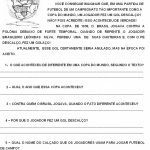 Text Interpretation Activities to Print
Text Interpretation Activities to Print
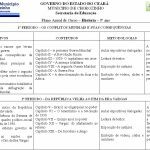 6th to 9th Year Annual History Plan
6th to 9th Year Annual History Plan
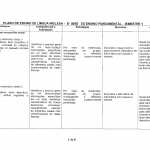 ANNUAL PLAN ENGLISH 6TH TO 9TH YEAR
ANNUAL PLAN ENGLISH 6TH TO 9TH YEAR
 ACTIVITY IDEAS WITH PARENTHESES
ACTIVITY IDEAS WITH PARENTHESES
 MATHEMATICS DIAGNOSTIC EVALUATIONS 6th to 9th grade
MATHEMATICS DIAGNOSTIC EVALUATIONS 6th to 9th grade
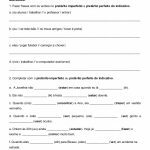 ACTIVITY IDEAS ABOUT IMPERFECT PRETERITE
ACTIVITY IDEAS ABOUT IMPERFECT PRETERITE
Very important these descriptors.
It helped me a lot to understand how to make my job easier.
This site uses Akismet to reduce spam. Learn how your comment data is processed.
